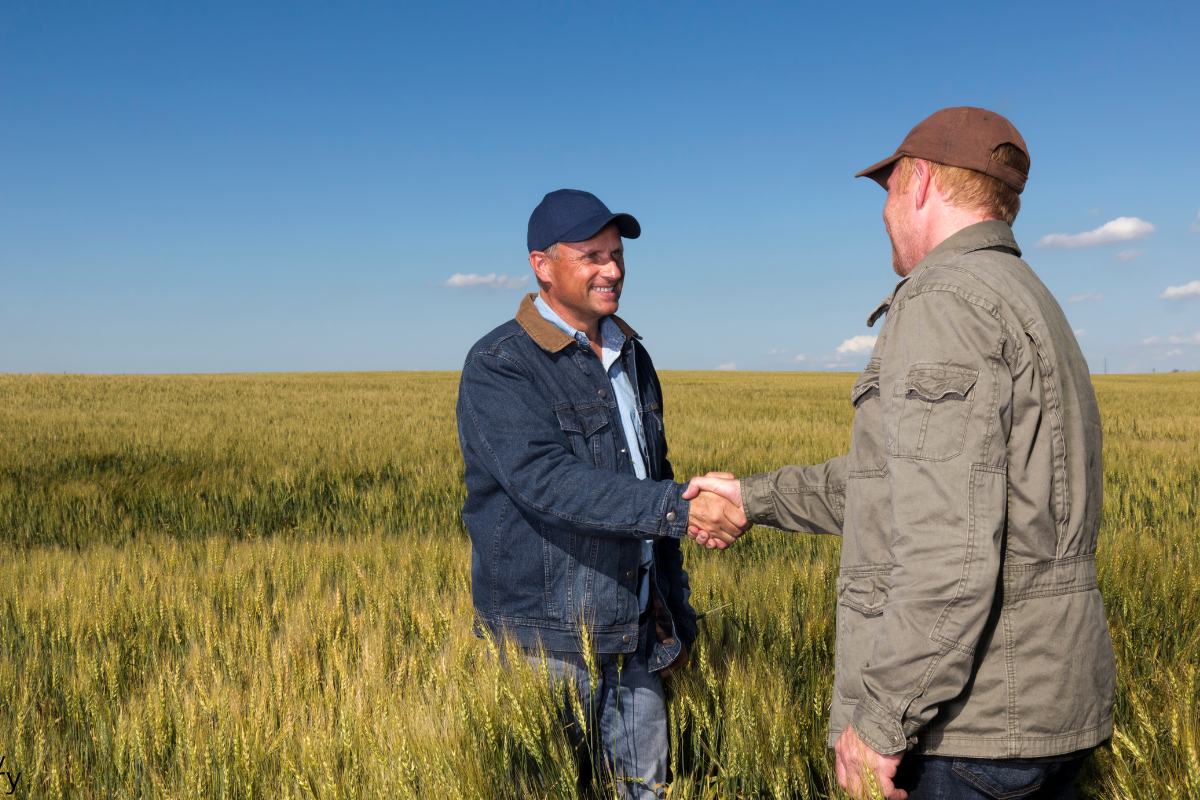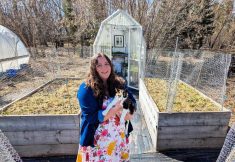Often farmers look at the urban man-dog relationship and shake their heads, asking how does that make sense. But when one Prairie grain farmer looked at that same picture, his question was different.
Jason Skotheim asked, how can I get a piece of that?
If you grew up on a farm, there’s a fairly high likelihood that a dog was an integral part of the picture.
But just like the way you were a farm kid, not a town kid, there’s a good chance this was a farm dog and that it was more like working livestock than just a pet.
Read Also

Are you ready for farm succession?
What motivates some farmers to make a succession plan while others don’t seem worried.
Rural dwellers are some of the very, very few people who retain the original need for a dog in today’s increasingly urban world.
Off the farms and away from the countryside, there’s less use for the dog in its traditional role as helper with herding and hunting, though arguably they remain popular for their other crucial role as early warning alarm.
Outside of these ancestral roles, dogs and cats have begun taking on new and posher meaning. Consider the “purse dog” for example, a fixture of popular culture in recent years. They’re small-breed dogs — generally five pounds or less — favoured by affluent female urbanites from the “Sex and the City” mould. These pampered pooches are occasionally seen in some of North America and Europe’s glitziest regions, peeking out the top of their owners’ purses as they’re carried about town.
There’s a similar divide in the cost of veterinary services. Out in the country such things are largely a consideration of economy, and a working dog can get fixed more affordably, usually by the same vet that’s preg checking the cows. In the heart of the city however, you see specialized facilities catering only to certain breeds, for example, where you get wall-to-wall carpet, soft music, and a $3,000 bill.
Today, Skotheim, an east-central Saskatchewan farmer, is spending more and more time on his new company, Horizon Pet Nutrition, which he runs along with two Alberta-based partners with interests in the pet business.
“People are treating their pets much, much differently these days,” Skotheim says while showing Country Guide around the company’s production facility at Rosthern, 70 kilometres northeast of Saskatoon. “As their pets become more and more like another member of the family, their owners are paying a lot more attention to what they’re eating.”
Skotheim doesn’t at first appear to be the sort of guy who’d be running a premium pet food operation.
He is a practical, down-to-earth, business-minded fellow who farms about 4,000 acres of grainland in partnership with his brother just north of the city of Prince Albert. He’s also worked in economics research for the provincial government at the University of Saskatchewan.
And while he owns a dog, he’s not by trade an animal nutritionist. So how did Skotheim wind up in the pet food business?
It’s a long story involving some friends and family in the retail pet business, and an international boundary at the 49th Parallel that had been slammed shut to animal food shipments from the south due to the BSE crisis.
“It was in 2004, and we were visiting with friends who are in the retail end of the pet business,” Skotheim says. “They were quite concerned that they were basically going to be running out of pet food because the border was closed.”
To a Saskatchewan farmer, well aware of the country’s enormous power to produce food, this seemed ludicrous. Also silly, he soon learned, was the fact that in the middle of the Prairies, all the food for virtually every pet was being imported.
It was then that Skotheim blurted something out that was destined to change the course of his life.
“I guess you could say I opened my big mouth,” he says with a rueful chuckle. “I said, ‘Well why don’t we just make it here?’”
It was a bold statement, when you consider the reality of the pet food market. A handful of companies dominate that market. Just think of giants like the U.S. titan Ralston Purina and the Swissbased multinational Nestle, to name only two. When you say you’re going into the pet food business, you’re basically saying those companies are your competition and you’re going to figure out a way to beat them — a daunting task.
But Skotheim says the partners realized early on that they’d need to carve our their own niche, rather than go toe to toe. Their product had to be unique, offer a specific value to customers and come in at a price point that provided a fair return to the company and its owners but didn’t horrify pet owners with sticker shock.
There was, they calculated, enough room to be found in the middle ground. They wouldn’t chase the Wal-Marts of the world and become just another supplier of plain old dog kibble in an oversized bag at the lowest possible price point. Nor would they become a chichi purveyor of raw dog food shipped in individual portions. They’d give the veterinarian’s office and the high-priced medical rations aimed at specific maladies a pass too.
“You won’t find us there because that’s not our market,” Skotheim insists.
Instead they aimed at a market they already understood through the partners’ tie-in to the pet retail world, and they narrowed their focus to manufacturing and retailing a quality dry kibble through distributors who serviced independent and regional pet retailers.
But there’s a long row to hoe between deciding to do it and sending that first pallet out the plant door.
To start with, there was the question of what to make the dog food out of. There are a handful of Canadian firms making kibble, Skotheim told Country Guide, but few offer products with any real difference from the big commercial firms, who base their feed formulations on a handful of well-established ingredients, such as corn and brown rice, which can’t be grown at Prince Albert.
“I saw one of our competitor’s formulations a couple years ago and it was mainly corn and rice,” Skotheim says. “I made the comment then that I wondered which county in Iowa their animal nutritionist was from — and then I found out a few months later that he actually was from Iowa.”
Rather than recreate the wheel, Horizon chose to do something different and manufacture a product out of Prairie grains and pulses, together with other locally sourced ingredients like chicken and fresh vegetables. The goal, Skotheim explains, was to provide a mid-priced product that clearly had a quality advantage, coupled with short supply lines that assured pet owners of accountability.
During Country Guide’s visit to the Horizon plant there was plenty of evidence of this strategy at work. From a facility whose cleanliness rivalled many human food-processing plants, to packaging that differentiated the products sector by sector — a classy urban skyline on the package for the small dog formulation for example — Horizon is clearly striving to make their products stand out, something that Skotheim says will help the organization succeed.
“I tell the guys, ‘If you’re not ready to take a bite out of anything yourself, throw it out,’” he says. “We really emphasize that.”
Another key differentiator is relying on products produced by the region’s farmers. For example, pulse crops such as field peas offer a number of advantages. They’re an excellent source of protein and fibre, and seem to offer a number of dietary benefits over other field crops such as wheat. Making this connection to local fields and barns also serves to emphasize the enhanced accountability.
“We know that this province produces some of the best agricultural products in the world, and buying them locally lets us know and understand the quality of those ingredients,” says Skotheim.
“I guess you could say it’s the equivalent of the 100-mile diet for your dog,” he adds with a chuckle.
It’s paid off for the company, which now ships product throughout Canada and as far south as Florida, all with a proud “made in Canada” logo on the bags.
As for Skotheim, he says the economic success is great — he and his partners did, after all, go to all this trouble to turn a profit. But just as importantly, he says he really enjoys the regular feedback he gets from his customers day in and day out, like an old friend who decided to start feeding his dog Horizon food to support his buddy’s new business.
“A couple weeks later he told me a friend of his said to him, ‘What did you do to the dog? He looks great,’” Skotheim says. “When you hear stuff like that, it’s very rewarding.”CG















